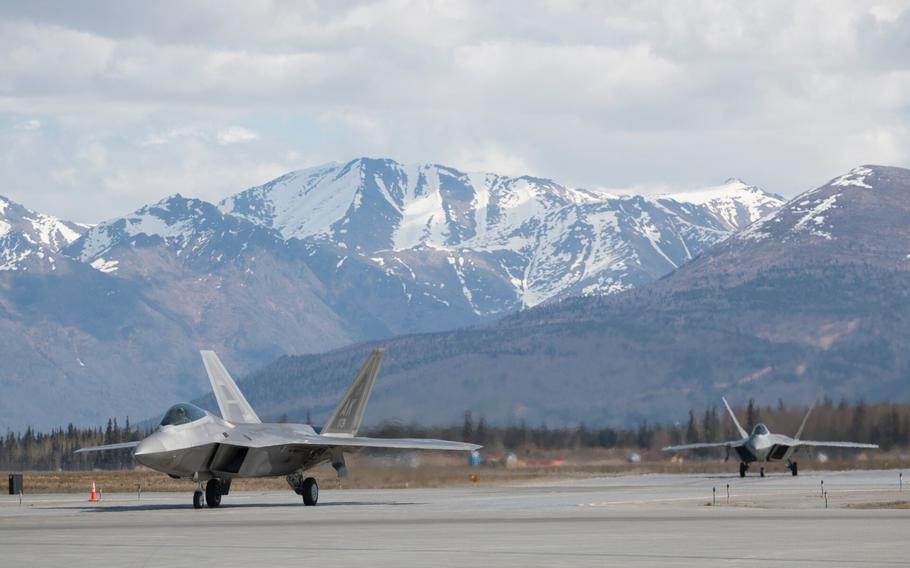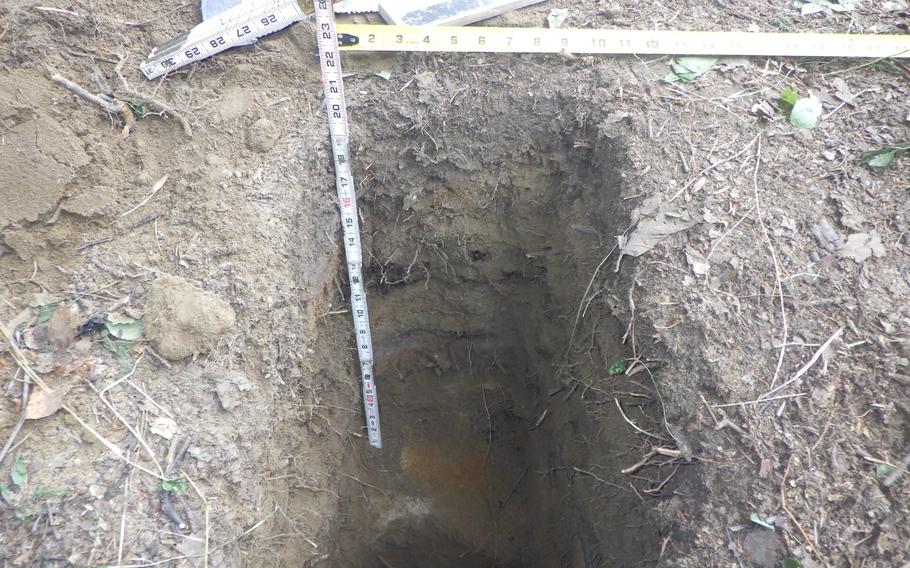
At more than 74,000 acres, much of Joint Base Elmendorf-Richardson near Anchorage, Alaska, remains undeveloped adjacent to woodlands and mountains. (U.S. Air Force)
Air Force engineers and archaeologists in Alaska have discovered a food cache on the Upper Cook Inlet southwest of Anchorage used 1,000 years ago to store salmon, moose, caribou, and berries.
“This is the oldest known site on the east side of Upper Cook Inlet,” said Margan Grover, an archaeologist and Joint Base Elmendorf-Richardson’s cultural resource manager. “JBER and the surrounding area have been used for a very long time.”
The Air Force announced the find in December and it was spotlighted in the January issue of Archaeology magazine.
The site was discovered last June during a routine surveying training exercise by the 673rd Civil Engineer Squadron in a remote, wooded part of the base. The squadron’s training is used to hone its skills to carry out “agile arctic combat support,” the Air Force said.
The site was slowly excavated over the last year by a team of civilian Air Force archaeologists, tribal experts and the Northern Land Use Research Alaska group.
They found a largely intact cache — about three feet wide by three feet long and three feet deep — lined with birch tree bark to keep out excessive moisture and invasive bugs or animals.
The food inside, collected in summer, could sustain life during Alaska’s long, cold and dark winters, researchers said.
“They established a cyclical system of movement that allowed them to be in the right place at the right time for hunting, fishing, gathering, weather and socializing,” Grover said.
Radiocarbon dating that measures deterioration of organic substances over time pegged the cache at about 10 centuries old, according to Liz Ortiz, a civilian Air Force archaeologist at Elmendorf-Richardson. She likened the cache to a latter-day root cellar used by farmers.
The cache dates to the time of the Dene people, ancestors of the Navajo and Apache in present-day New Mexico and Arizona.
The find is seven centuries older than the 1778 visit of British explorer Captain James Cook, for whom the nearby inlet where the base is located is named.

The remains of a 1,000-year-old food cache excavated at Joint Base Elmendorf-Richardson belonging to Dene people, an ancient group related to tribes including the Navajo and Apache in the current Southwest U.S. ( U.S. Air Force)
Researchers using scientific finds and oral traditions handed down over the centuries say native people would gather where the base is now located in the spring and stay through the summer to catch and preserve salmon. Traditional houses, called nichił, and smokehouses lined the bluff and beach along Upper Cook Inlet.
“The Dene had a sophisticated understanding of their environment that allowed them to thrive for generations,” Grover said.
Smaller finds of Dene artifacts have turned up at Elmendorf-Richardson in the past, but researchers believe that many caches were buried or destroyed when the military used heavy machinery to rapidly build the base during World War II.
Elmendorf-Richardson has had an Army and Air Force presence on Upper Cook Inlet dating back to 1940. Today it is a joint Air Force and Army installation with 32,000 service members, civilians, and families. Commands include the 11th Air Force and the Army’s 11th Airborne Division.
Next door is Anchorage, the state’s largest city, with 285,000 residents.
No active duty, reserve or National Guard troops were involved in the excavation, though volunteers on their own time have helped out, base officials said.
Today, the National Historic Preservation Act ensures sites considered for development are first surveyed for possible historic significance before any work begins.
“JBER cultural resources include historic buildings and districts, archaeological sites, and cultural landscapes,” said Erin Eaton, a JBER spokeswoman. “Site types span pre-colonial periods through the Cold War.”
“Archaeological research supports current and future mission readiness by locating land use constraints early to allow time to avoid where possible or mitigate when necessary,” she said.